Tools Required
J 39400-A Halogen Leak Detector
Removal Procedure
- Recover the refrigerant from the A/C system. Refer to Refrigerant Recovery and Recharging .
- Remove the discharge hose to compressor nut.
- Disconnect the discharge hose from the compressor.
- Remove and discard the sealing washer.
- Cap or tape off the discharge hose.
- Release the drive belt tensioner.
- Raise and support the vehicle. Refer to Lifting and Jacking the Vehicle in General Information.
- Remove the air baffle bolts.
- Remove the air baffle.
- Disconnect the electrical connector from the compressor.
- Disconnect the engine harness electrical connector.
- Remove the suction hose to compressor nut.
- Disconnect the suction hose from the compressor.
- Remove and discard the sealing washer.
- Cap or tape off the suction hose.
- Remove compressor mounting bolts.
- Lower the vehicle.
- Remove the battery tray. Refer to Battery Tray Replacement in Engine Electrical.
- Remove the lower radiator hose. Refer to Radiator Outlet Hose Replacement in Engine Cooling.
- Disconnect the upper transmission oil cooler hose from the radiator. Refer to Automatic Transmission Oil Cooler Hose Replacement in Automatic Transaxle -- 4T65-E.
- Remove the compressor.
- If replacing the compressor, balance the compressor oil. Refer to Compressor Oil Balancing .
Important: Cap or tape the open A/C hoses immediately to prevent system contamination.
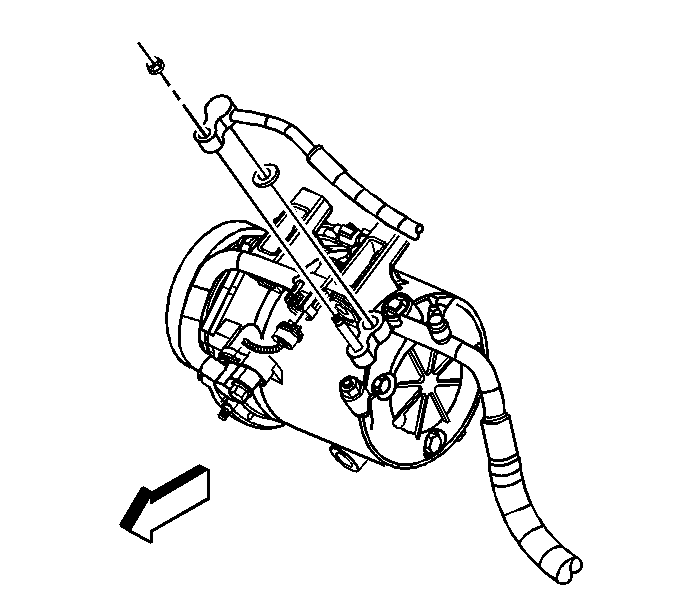
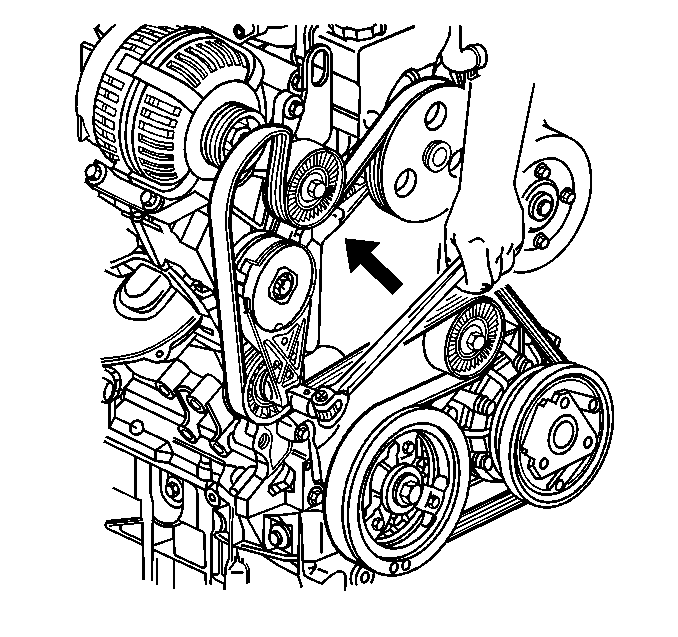
Remove the drive belt from the compressor pulley.
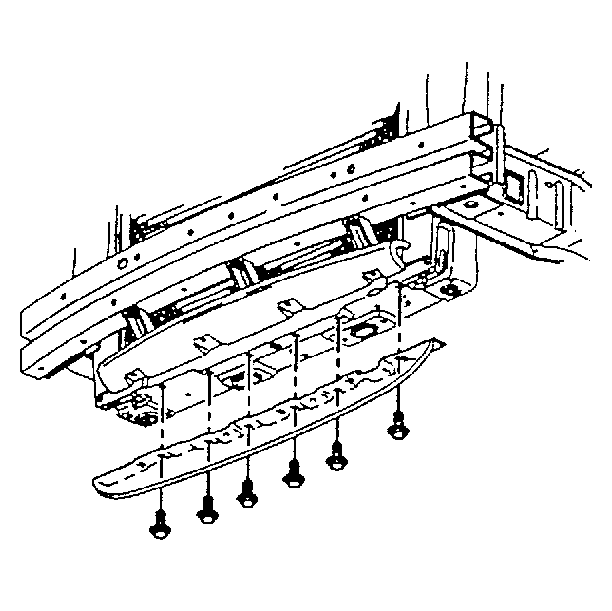

Reposition the engine harness away from the compressor.
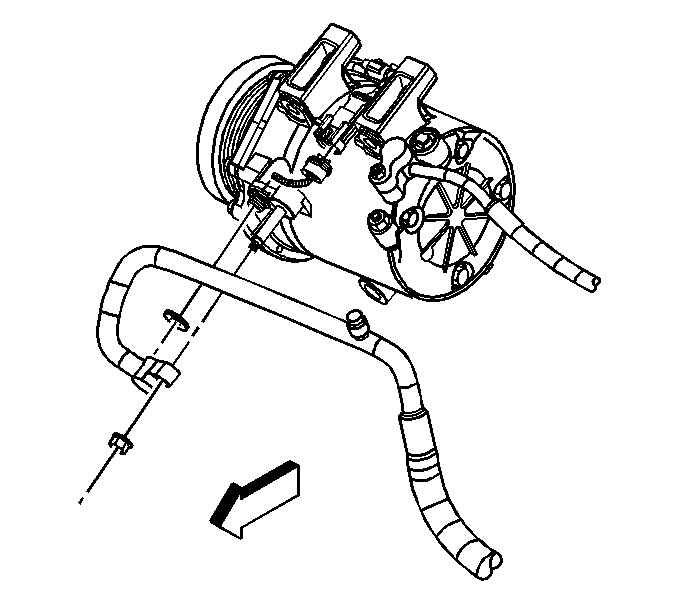
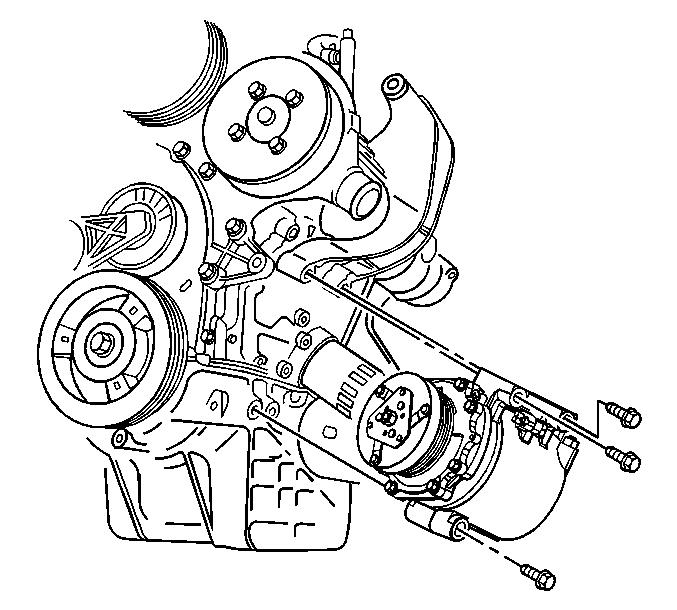
Important: Replacement compressors are partially precharged with PAG oil. Refer to Refrigerant System Capacities .
Installation Procedure
- Install the compressor.
- Connect the upper transmission oil cooler hose to the radiator. Refer to Automatic Transmission Oil Cooler Hose Replacement in Automatic Transaxle -- 4T65-E.
- Install the lower radiator hose. Refer to Radiator Outlet Hose Replacement in Engine Cooling.
- Install the battery tray. Refer to Battery Tray Replacement in Engine Electrical.
- Raise the vehicle.
- Install the compressor mounting bolts.
- Remove cap or tape from the suction hose.
- Install a new sealing washer to the suction hose.
- Connect the suction hose to the compressor.
- Install the suction hose to compressor nut.
- Connect the electrical connector to the compressor.
- Connect the engine harness electrical connector.
- Install the air baffle.
- Install the air baffle bolts.
- Lower the vehicle.
- Release the drive belt tensioner.
- Remove cap or tape from the discharge hose.
- Install a new sealing washer to the discharge hose.
- Connect the discharge hose to the compressor.
- Install the discharge hose to compressor nut.
- Evacuate and recharge the A/C system. Refer to Refrigerant Recovery and Recharging .
- Leak test the fittings of the component using J 39400-A .

Notice: Use the correct fastener in the correct location. Replacement fasteners must be the correct part number for that application. Fasteners requiring replacement or fasteners requiring the use of thread locking compound or sealant are identified in the service procedure. Do not use paints, lubricants, or corrosion inhibitors on fasteners or fastener joint surfaces unless specified. These coatings affect fastener torque and joint clamping force and may damage the fastener. Use the correct tightening sequence and specifications when installing fasteners in order to avoid damage to parts and systems.
Tighten
Tighten the bolts to 50 N·m (37 lb ft).

Important: Using a lint-free clean, dry cloth, carefully clean the sealing surfaces of the A/C refrigerant hoses and the A/C refrigerant component.
Flat washer type seals do not require lubrication.Tighten
Tighten the nut to 16 N·m (12 lb ft).


Tighten
Tighten the bolts to 20 N·m (15 lb ft).

Install the drive belt on to the compressor pulley.

Tighten
Tighten the nut to 16 N·m (12 lb ft).
